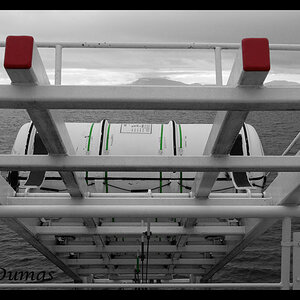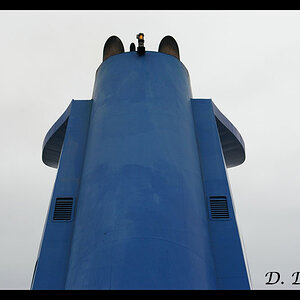A
astrostu
Guest
Hello all -
I photographed the transit of Mercury across the Sun on Wednesday for as long as I was able (until it set). I took photos every 5 minutes to make a movie, but I also took photos every minute at the beginning. I'm trying to figure out the best way to display the first 7 minutes in a non-movie form that shows Mercury slowly entering the solar disk.
What I put together below was my shoddy and uncreative attempt last night (shrunk to about 30% to fit on the screen). Mercury is the tiny dot at about the 7:00 position (not the larger, more interesting sunspot at the 8:00 position).
Anyone have ideas?

I photographed the transit of Mercury across the Sun on Wednesday for as long as I was able (until it set). I took photos every 5 minutes to make a movie, but I also took photos every minute at the beginning. I'm trying to figure out the best way to display the first 7 minutes in a non-movie form that shows Mercury slowly entering the solar disk.
What I put together below was my shoddy and uncreative attempt last night (shrunk to about 30% to fit on the screen). Mercury is the tiny dot at about the 7:00 position (not the larger, more interesting sunspot at the 8:00 position).
Anyone have ideas?




![[No title]](/data/xfmg/thumbnail/40/40287-4f839095000f74d779b90ed75df9dc62.jpg?1619739408)

![[No title]](/data/xfmg/thumbnail/41/41928-733459df56e3fa2fe957f910305d4e37.jpg?1619739945)



![[No title]](/data/xfmg/thumbnail/40/40286-86401b94de8b01bea8bb4ea154aaea0a.jpg?1619739408)




